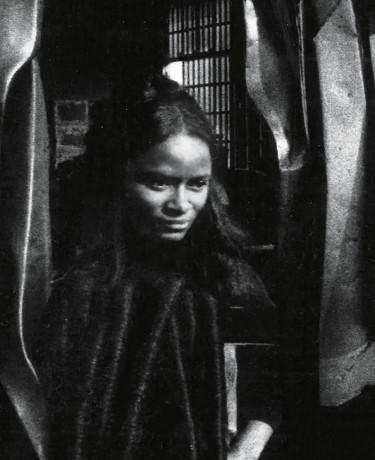Eugène Printz
One of the great names of the Art Deco movement, Eugène Printz conceived of and designed all the furniture in the Asia Salon at the Palais de la Porte Dorée, a state room which, during the 1931 Colonial Exposition, served as the reception office of Maréchal Lyautey, the exposition’s general commissioner.
Born on June 1st 1889, died on March 26th 1948 in Paris, Eugène Printz came from a family of cabinetmakers in the Faubourg Saint-Antoine, where he opened his own workshop in the Rue Saint-Bernard in 1905 in the purest tradition of 17th and 18th century cabinetmakers, Boulle and Riesener, in the styles of Louis XV and Louis XVI.
In the 1920s, he gave up copying old furniture to devote himself to modern design, influenced by the architect Pierre Chareau, for whom he made many pieces of furniture and notably, in 1925, the pieces decorating the office-library of the Pavilion of a French embassy, with moveable partitions and a modular ceiling (today exhibited at the Musée des Arts Décoratifs in Paris), designed by the architect for the International Exhibition of Decorative Arts (which gave its name to the Art Deco style). With Mallet-Stevens, another key figure in modern architecture who introduced glass and steel into construction, Pierre Chareau established a new, modernist aesthetic with, for example, the emblematic Maison de Verre in 1928, in which the architecture is closely linked to the decorative arts and where the furniture pieces, beyond their minimalist, elegant aesthetic, took on a new role, becoming moveable and changeable.
A recognised cabinetmaker
Eugène Printz went on to become a popular cabinetmaker with growing success, whose talent was recognised for his furniture with its modern, minimalist Art Deco lines, for which he was sometimes the designer and sometimes the maker (he designed the models, made the mock-ups on a scale of 1/10 and was in charge of their production). Through his gallery on the Rue de Miromesnil, opened in 1928, he received many orders to decorate the interiors of clients from an international bourgeoisie with unique, sophisticated pieces made from refined materials, borrowing from the luxury domain, the true signature of Art Deco aesthetics (see Jeanne Lanvin’s office at her fashion house on the Rue du Faubourg Saint-Honoré).
His furniture, often “à combinaisons”, in other words featuring sliding door mechanisms, pivoting trays or slider systems that make some parts moveable, are always decorated with sumptuous veneers, made from rare essences like Patawa palm, Gabon ebony, mahogany, sycamore or rosewood, enhanced with bronze or gilded brass. Some of his creations currently feature in the collections of the Mobilier National.
He took part in the annual Salon des Artistes Décorateurs, the Salon des Tuileries and the Salon d’automne, where he was a noteworthy figure. At the Salon d’automne of 1928 he presented his first collaboration with Jean Dunand, a rectangular sideboard featuring a palm wood veneer and various lacquered folding and sliding doors. They went on to produce many furniture pieces together, mixing precious wood veneers and lacquered panels.
Decoration and furnishings in the Asia Salon
In 1930, the architect Albert Laprade submitted an order for the panelling at the Salon de la Maison de Cuba/Fondation Rosa Abreu de Grancher, which he built at the Cité International Universitaire in Paris. The following year, Albert Laprade, as architect of the Palais de la Porte Dorée, asked him to create the decoration and furnishings for the office of Maréchal Lyautey, commissioner for the 1931 Colonial Exposition, known as the Asia Salon.
For this reception room, Printz created an exceptional set of furniture, classified as historic monuments, made from Patawa palm (bark of the Gabon palm tree), the wood considered to be the hardest and most difficult to work on, and therefore the most expensive (he was the only one to use it in cabinetmaking). Printz also chose this wood to make the veneer for the two monumental doors 5.40 metres high, with a gilded bronze lock, along with the frames, the plinths and the closet doors, which gives the salon stylistic unity and aesthetic coherence, reinforcing the idea of the total work of art, characteristic of Art Deco.
He also came up with the curved design of the marquetry parquet, made from bilinga wood from Gabon (with a very orange colour), arranged in checkerboard patterns, embellished by broken lines made from wenge, and ebony edging.








